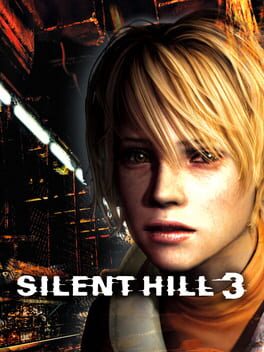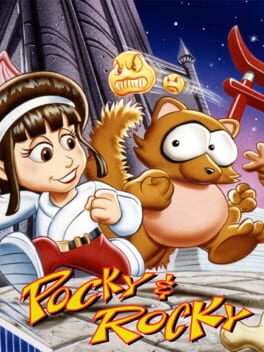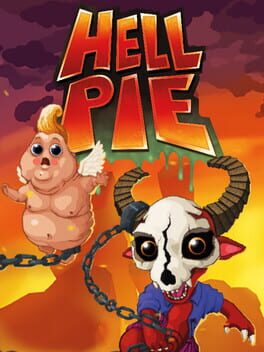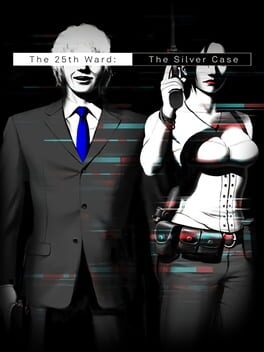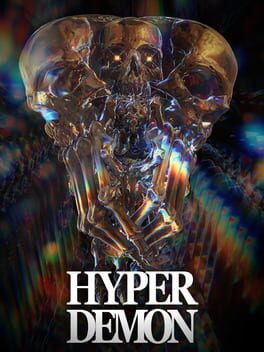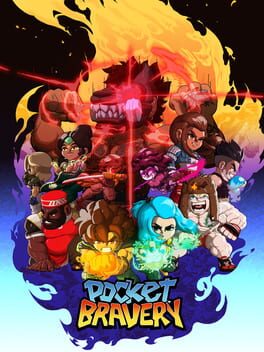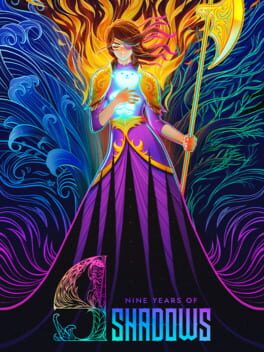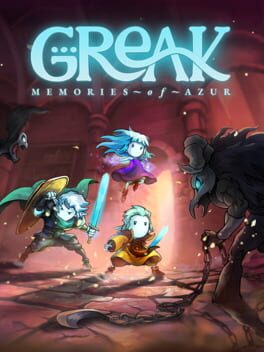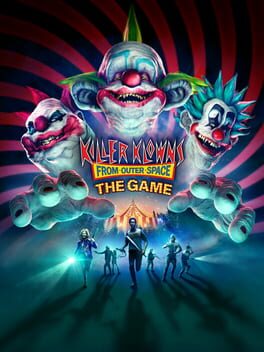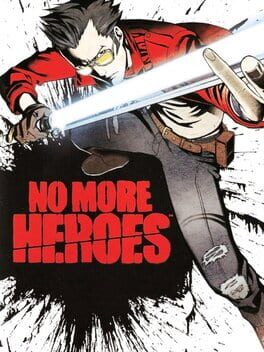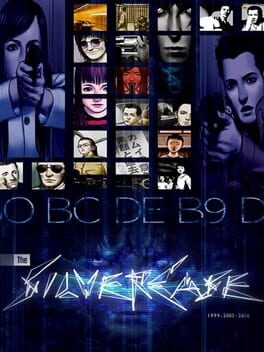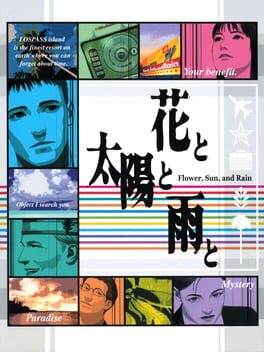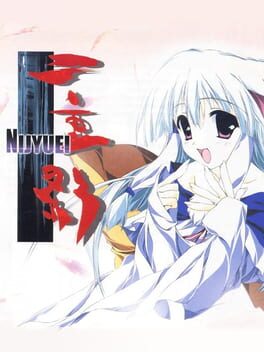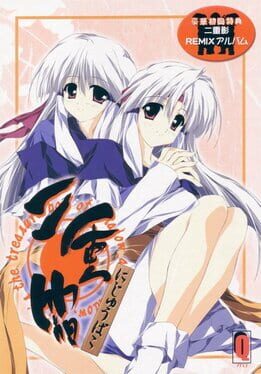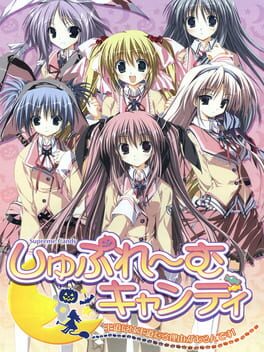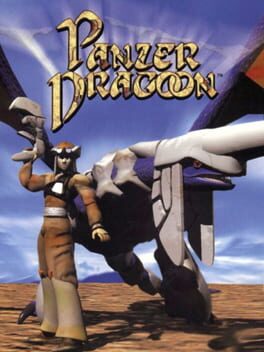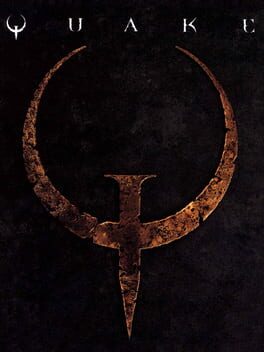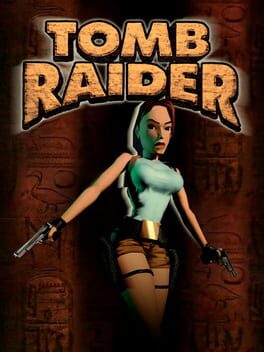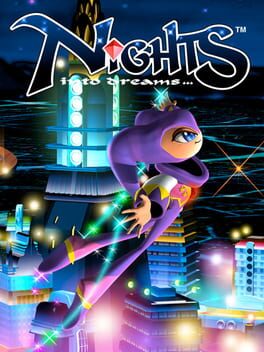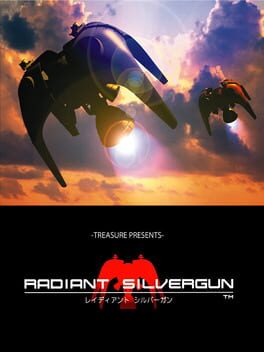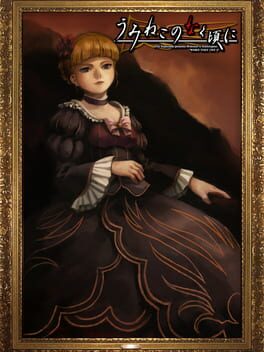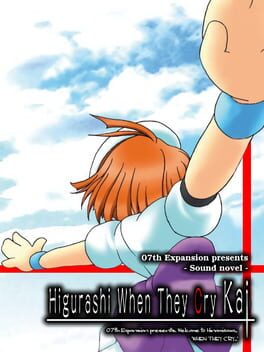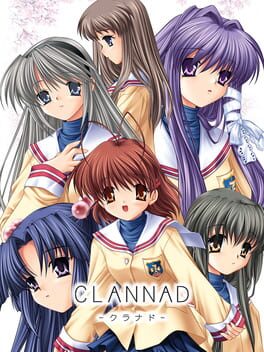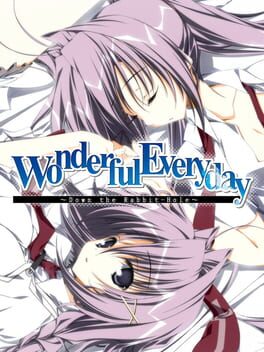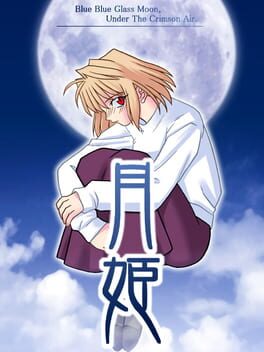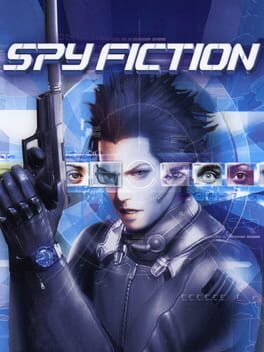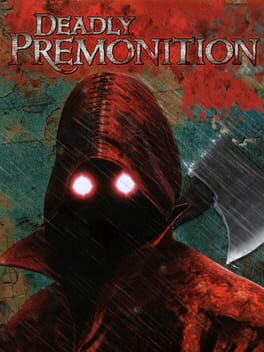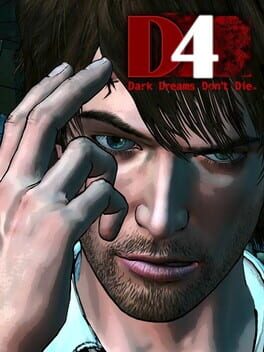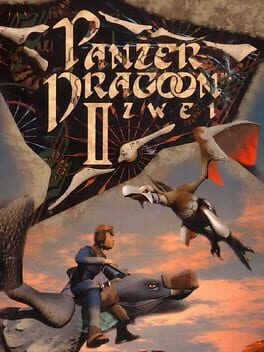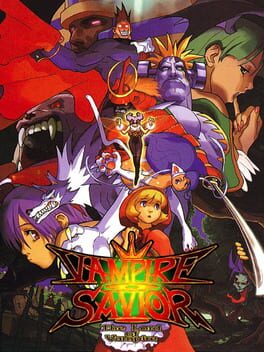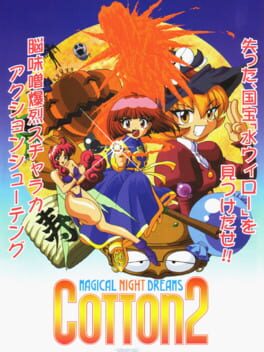YurikoSakuma
278 reviews liked by YurikoSakuma
Resident Evil 2
1998
Fantastic game. It's a hallmark of video game design, incredibly satisfying to explore and uncover all of its labyrinthian secrets. Even though it's not really scary anymore, the game still delivers a tense experience through its mechanics of scarce ammo and health items. Death is always just around the corner.
I especially like the setting, first traversing through a destroyed city infested with zombies, walking past debris and raging fires before finally arriving at the infamous police station. You'll travel through more varied environments before reaching the game's satisfying conclusion.
It feels more grounded than the first Resident Evil with it's Rube Goldberg-machine like mansion and it's quirky death puzzles.
It's a short game that warrants multiple playthroughs to get the most out of it. Well worth the time and effort.
I especially like the setting, first traversing through a destroyed city infested with zombies, walking past debris and raging fires before finally arriving at the infamous police station. You'll travel through more varied environments before reaching the game's satisfying conclusion.
It feels more grounded than the first Resident Evil with it's Rube Goldberg-machine like mansion and it's quirky death puzzles.
It's a short game that warrants multiple playthroughs to get the most out of it. Well worth the time and effort.
Silent Hill
1999
the best silent hill game, nothing will top this one i'm fucking serious
Silent Hill 3
2003
for my playthrough of silent hill in the last couple weeks, I was comfortable on the couch in my living room, surrounded by earnest support and goofy comments from friends. I played silent hill 3 in the opposite setting, trapped in my room alone, unable to see virtually anyone thanks to a positive covid test. wood-panel floors, nauseating warm light bleeding through closed blinds, and the industrial cacophony of silent hill 3 on the tv in front of me. dunno if this made the experience any more or less authentic, or helped me channel my ennui into a suitably hateful object. didn't really make me much less miserable regardless.
silent hill was a redemption, silent hill 2 was a masterpiece, and then team silent split into two teams, prodded on konami to strike while the iron was hot. while the silent hill 4 team tore up the prior canvas and created a new concept wholesale, silent hill 3 meandered in circles until finally being patched together and sent out the door. it is, without a doubt, the gimped entry. slightly shorter than silent hill 2, the game reuses the hospital locale from that game nearly wholesale along with the slice of silent hill around it, which happens to be only time heather actually gets to wander the streets of the titular town at all. it lacks the side quests of the original and the player psychoanalysis of the sequel, concluding with only a single ending on a first playthrough and slightly different one if you prioritize combat on a subsequent run. on structure alone it feels unfortunately slight.
a purely structural view of a silent hill game diminishes the importance of its indelible imagery, and silent hill 3 comes out guns blazing in this regard. this is a vengeful silent hill, dripping with bile and blood and pulsing with constant stark red. heather, mother of God, intensifies the usual otherworld into something even more hellish. the usual flayed-flesh walls and rusty grating give way to squishy fatty surroundings that completely choke out light and close in around heather, sapping her health. crucified corpses found in the cages of prior games now brazenly hold their dead offspring, barely beyond that of a fetus. behind cracks in the walls and gaps in the floors heather is constantly stalked by loyal servant valtiel, who will drag her corpse away if she is to die. however, when she finds him curled within a wooden womb in woman's locker room of the hospital, she can't help but feel pity at his childlike mannerisms. the game heavily ruminates on these ideas of maternalism and the body being violated, making true on the potential wrought from silent hill 1's story.
which I must say, silent hill 3 returning to the occult origins of the series allows the developers to reinterpret and heavily expand upon the first game's concepts. while that game only plays with the implications of its plot, silent hill 3 centers the experience around the tortured soul at the heart of silent hill 1: alessa. her consciousness within heather allows her trauma to bubble to the surface as the game continues, reliving and recontextualizing moments from the first game that were only glimpses past the blank eyes of harry mason. heather's sense of unreality within the fog and other worlds are not simply expressions of fear but furthermore her grasping with the hidden memories she must let percolate from within her. she is not who she thinks she is, and her struggle with silent hill is not simply one of unleashing smothered guilt but rather letting the memories of alessa relive within her without overtaking her. the endgame reflects this heavily, as the bowels of the order's church turn into a garden of memories from the original game remade for heather to navigate and relive her past life. loose connections in the first game are made concrete here, immortalizing alessa not just as an off-screen torture victim and a vanishing spirit but a real girl, one who tried to reconcile both an earnest belief in god with the fury and broken psyche of her abusive mother. indeed, the game analyzes the cult itself heavily in these closing chapters, focusing on religious doubt and the interplay of accepting a community versus actually adhering strictly to said religion's practices. vincent and claudia's relationship is at the center of all of this, with vincent wishing for restoration as he succumbs to pleasures of the flesh, all the while naively hoping to restore the status quo of the cult he helps run.
the absence of this lens within analyses like that of super eyepatch wolf reveal an inability to dissect this game outside of the lens of silent hill 2's individual psychological breakdown. clinging onto poorly sourced interviews has allowed such a belief to exist, when really it seems more clear that silent hill 3 simply had a troubled development (starting off as a... rail shooter?) and shuffled into its current state with a small team and truncated budget. the story threads from sh1 may have been used partially to help buoy the creatively adrift project, but they certainly are integrated with a thoughtfulness that does not seem solely some executive-level demand to "franchise-ify" the series. the narrative this game presents features a psychologically-damaged protagonist that heavily distances itself from simply repeating james sunderland's story; heather struggles to maintain her emotions and frequently lashes out in comparison to james' near-suicidal indifference to the events around him. she learns to accept and show love to her alessa side, giving her the strength to press on and challenge her role as vessel for god. she's expressive even in her flavor text and perfectly shifts moods on a dime in her cutscenes; I would dare say she's the best of the original three protagonists. to lament that she needed an identical arc of suppressed guilt to james sunderland trivializes the many undercurrents this game implants within its understanding of the events of the original game.
so why did I like it less than the first two? the rail shooter origins for this game may shine through more than expected given that the game overall has a somewhat heavier focus on action. for the first half of the game this is not much of an issue -- you can play the game running past each monster with little problem, just like in the prior entries. a few new systems are added to supposedly spice things up such as a clumsy block and beef jerky for distracting the dogs, but actually putting these into practice feels difficult. investigating doors also now takes place in real time, meaning that the usual gameplay loop of clicking through dozens of doors with jammed locks now feels genuinely dangerous. solid change, and one that I think benefits the series more than anything. it's into the second half of the game with much more involved boss fights and strong enemies that completely block off certain hallways where the gameplay begins to fall apart. healing items are actually somewhat scarce, and I managed to finish the game with absolutely nothing left. having to navigate these awkward shooting sections with combat that has changed little from the first entry just feels like a waste of time, and frankly reduces the horror aspect for it for me. the enemies may feel less powerless than in prior entries, but their presence becomes more of an annoyance when you stumble into rooms with several identical ones all swarming on you or when they begin to use firearms against you.
but this is the second half of the game, right? what about the first half? possibly the real extenuating factor that really lost my interest was the subway/sewer/construction site/office building section. in what makes up easily over a quarter of the game, heather runs through endless concrete halls and through the same copy-paste building format over and over again. endless reception desks and subway signs and sewer hallways just... don't scare me. you get a little otherworld taste at the end of that office building section that saves the experience a little bit, but after so long of just wandering about with little threat from the enemies around you, it feels almost too brief. the second half has the excellent amusement park locale which is just absolutely sickening to look at and to hear, but it's sandwiched between the hospital reused from sh2 and the church by which point the combat focus becomes more annoying. this whole second half is littered with virtually every great setpiece in the game (shame on me for somehow walking past the infamous mirror room, the womb otherworld is really hard to see in), but there's just so many more nitpicks here than I had with the prior two games.
the process of writing this honestly makes me think that I particularly enjoy thinking about this entry much more than I do playing it. a lot of the best reviews on this site come from this game as well imo. it's a shame then that this particular game goes a little overboard in making each of its areas truly dangerous. when I laughed at silent hill it was a way of hiding my true fear; when I get annoyed at silent hill 3 it simply dilutes that real fear and renders it secondary. and wow did that final boss have a fuckton of HP.
silent hill was a redemption, silent hill 2 was a masterpiece, and then team silent split into two teams, prodded on konami to strike while the iron was hot. while the silent hill 4 team tore up the prior canvas and created a new concept wholesale, silent hill 3 meandered in circles until finally being patched together and sent out the door. it is, without a doubt, the gimped entry. slightly shorter than silent hill 2, the game reuses the hospital locale from that game nearly wholesale along with the slice of silent hill around it, which happens to be only time heather actually gets to wander the streets of the titular town at all. it lacks the side quests of the original and the player psychoanalysis of the sequel, concluding with only a single ending on a first playthrough and slightly different one if you prioritize combat on a subsequent run. on structure alone it feels unfortunately slight.
a purely structural view of a silent hill game diminishes the importance of its indelible imagery, and silent hill 3 comes out guns blazing in this regard. this is a vengeful silent hill, dripping with bile and blood and pulsing with constant stark red. heather, mother of God, intensifies the usual otherworld into something even more hellish. the usual flayed-flesh walls and rusty grating give way to squishy fatty surroundings that completely choke out light and close in around heather, sapping her health. crucified corpses found in the cages of prior games now brazenly hold their dead offspring, barely beyond that of a fetus. behind cracks in the walls and gaps in the floors heather is constantly stalked by loyal servant valtiel, who will drag her corpse away if she is to die. however, when she finds him curled within a wooden womb in woman's locker room of the hospital, she can't help but feel pity at his childlike mannerisms. the game heavily ruminates on these ideas of maternalism and the body being violated, making true on the potential wrought from silent hill 1's story.
which I must say, silent hill 3 returning to the occult origins of the series allows the developers to reinterpret and heavily expand upon the first game's concepts. while that game only plays with the implications of its plot, silent hill 3 centers the experience around the tortured soul at the heart of silent hill 1: alessa. her consciousness within heather allows her trauma to bubble to the surface as the game continues, reliving and recontextualizing moments from the first game that were only glimpses past the blank eyes of harry mason. heather's sense of unreality within the fog and other worlds are not simply expressions of fear but furthermore her grasping with the hidden memories she must let percolate from within her. she is not who she thinks she is, and her struggle with silent hill is not simply one of unleashing smothered guilt but rather letting the memories of alessa relive within her without overtaking her. the endgame reflects this heavily, as the bowels of the order's church turn into a garden of memories from the original game remade for heather to navigate and relive her past life. loose connections in the first game are made concrete here, immortalizing alessa not just as an off-screen torture victim and a vanishing spirit but a real girl, one who tried to reconcile both an earnest belief in god with the fury and broken psyche of her abusive mother. indeed, the game analyzes the cult itself heavily in these closing chapters, focusing on religious doubt and the interplay of accepting a community versus actually adhering strictly to said religion's practices. vincent and claudia's relationship is at the center of all of this, with vincent wishing for restoration as he succumbs to pleasures of the flesh, all the while naively hoping to restore the status quo of the cult he helps run.
the absence of this lens within analyses like that of super eyepatch wolf reveal an inability to dissect this game outside of the lens of silent hill 2's individual psychological breakdown. clinging onto poorly sourced interviews has allowed such a belief to exist, when really it seems more clear that silent hill 3 simply had a troubled development (starting off as a... rail shooter?) and shuffled into its current state with a small team and truncated budget. the story threads from sh1 may have been used partially to help buoy the creatively adrift project, but they certainly are integrated with a thoughtfulness that does not seem solely some executive-level demand to "franchise-ify" the series. the narrative this game presents features a psychologically-damaged protagonist that heavily distances itself from simply repeating james sunderland's story; heather struggles to maintain her emotions and frequently lashes out in comparison to james' near-suicidal indifference to the events around him. she learns to accept and show love to her alessa side, giving her the strength to press on and challenge her role as vessel for god. she's expressive even in her flavor text and perfectly shifts moods on a dime in her cutscenes; I would dare say she's the best of the original three protagonists. to lament that she needed an identical arc of suppressed guilt to james sunderland trivializes the many undercurrents this game implants within its understanding of the events of the original game.
so why did I like it less than the first two? the rail shooter origins for this game may shine through more than expected given that the game overall has a somewhat heavier focus on action. for the first half of the game this is not much of an issue -- you can play the game running past each monster with little problem, just like in the prior entries. a few new systems are added to supposedly spice things up such as a clumsy block and beef jerky for distracting the dogs, but actually putting these into practice feels difficult. investigating doors also now takes place in real time, meaning that the usual gameplay loop of clicking through dozens of doors with jammed locks now feels genuinely dangerous. solid change, and one that I think benefits the series more than anything. it's into the second half of the game with much more involved boss fights and strong enemies that completely block off certain hallways where the gameplay begins to fall apart. healing items are actually somewhat scarce, and I managed to finish the game with absolutely nothing left. having to navigate these awkward shooting sections with combat that has changed little from the first entry just feels like a waste of time, and frankly reduces the horror aspect for it for me. the enemies may feel less powerless than in prior entries, but their presence becomes more of an annoyance when you stumble into rooms with several identical ones all swarming on you or when they begin to use firearms against you.
but this is the second half of the game, right? what about the first half? possibly the real extenuating factor that really lost my interest was the subway/sewer/construction site/office building section. in what makes up easily over a quarter of the game, heather runs through endless concrete halls and through the same copy-paste building format over and over again. endless reception desks and subway signs and sewer hallways just... don't scare me. you get a little otherworld taste at the end of that office building section that saves the experience a little bit, but after so long of just wandering about with little threat from the enemies around you, it feels almost too brief. the second half has the excellent amusement park locale which is just absolutely sickening to look at and to hear, but it's sandwiched between the hospital reused from sh2 and the church by which point the combat focus becomes more annoying. this whole second half is littered with virtually every great setpiece in the game (shame on me for somehow walking past the infamous mirror room, the womb otherworld is really hard to see in), but there's just so many more nitpicks here than I had with the prior two games.
the process of writing this honestly makes me think that I particularly enjoy thinking about this entry much more than I do playing it. a lot of the best reviews on this site come from this game as well imo. it's a shame then that this particular game goes a little overboard in making each of its areas truly dangerous. when I laughed at silent hill it was a way of hiding my true fear; when I get annoyed at silent hill 3 it simply dilutes that real fear and renders it secondary. and wow did that final boss have a fuckton of HP.
Silent Hill 3
2003
amazing monsters and level design the story is where it falls short but it really evolves upon the gameplay features in combat and environment that silent hill 2 created
Pocky & Rocky
1992
Pocky and Rocky is an underrated, difficult twin-stick shooter in the veins of Commando, a 16-bit inspired sequel Pocky & Rocky Reshrined is in the work by Natsume as we speak and should release within the week. It's neither a remaster nor a remake, rather a "follow-up" that borrows similar levels.
As for the original Pocky & Rocky, it's just an all-around unbelievably polished title from Natsume; who worked on Medabots, Wild Guns, Harvest Moon, and Ninja Warrior. They just have that portfolio without any stinkers, which made them some of the best developers of the Super Nintendo era. Unfortunately, their games weren't targetted to a Western audience, with a rather Japanese design philosophy.
This game has 6 levels which don't seem like a lot, but all of them are extremely complex and varied; they're all quite difficult. Playing on your own isn't recommended at all, as you can bring a friend to the fight, just be careful not to bounce into them, as there is friendly fire to balance.
Pocky and Rocky is quintessentially Japanese, our main character is a temple maiden and a tanuki, and our enemies are various "goblins" from the Japanese folklore legends. How Pocky & Rocky turns these chilling, creepy yokai monsters into cutesy characters is beyond stellar, and certainly gives the game a unique feel. Pocky and Rocky remain to this day one of my favorite shooters of all time and one of my favorite games of all time.
As for the original Pocky & Rocky, it's just an all-around unbelievably polished title from Natsume; who worked on Medabots, Wild Guns, Harvest Moon, and Ninja Warrior. They just have that portfolio without any stinkers, which made them some of the best developers of the Super Nintendo era. Unfortunately, their games weren't targetted to a Western audience, with a rather Japanese design philosophy.
This game has 6 levels which don't seem like a lot, but all of them are extremely complex and varied; they're all quite difficult. Playing on your own isn't recommended at all, as you can bring a friend to the fight, just be careful not to bounce into them, as there is friendly fire to balance.
Pocky and Rocky is quintessentially Japanese, our main character is a temple maiden and a tanuki, and our enemies are various "goblins" from the Japanese folklore legends. How Pocky & Rocky turns these chilling, creepy yokai monsters into cutesy characters is beyond stellar, and certainly gives the game a unique feel. Pocky and Rocky remain to this day one of my favorite shooters of all time and one of my favorite games of all time.
Hell Pie
2022
- Er diablo -
Mmm pues me lo termine recien y tengo más puntos malos que buenos, esta cosa es un intento de A hat in time × Conker que intenta imitar mucho el humor y crueldad de Conker pero a mi parecer les salio mal, es un juego que es muy morboso y que aveces me dio asco el juego por como estaba hecho su mundo xd.
El combate no me parecio nada espectacular y sus boss fights no me parecieron buenas peleas por ser tan simples y sin mucha alma :/
Lo mejor de este juego fue que Nugget te daba una movilidad muy buena en los saltos y que sus niveles por lo menos se me hicieron bien hechos para poder moverte entre ellos.
Mmm pues me lo termine recien y tengo más puntos malos que buenos, esta cosa es un intento de A hat in time × Conker que intenta imitar mucho el humor y crueldad de Conker pero a mi parecer les salio mal, es un juego que es muy morboso y que aveces me dio asco el juego por como estaba hecho su mundo xd.
El combate no me parecio nada espectacular y sus boss fights no me parecieron buenas peleas por ser tan simples y sin mucha alma :/
Lo mejor de este juego fue que Nugget te daba una movilidad muy buena en los saltos y que sus niveles por lo menos se me hicieron bien hechos para poder moverte entre ellos.
Tsui no Sora
TBD
Author’s note I — I am considering the possibility of opening a YouTube channel and using this script as the basis for a video on Tsui no Sora. If that becomes a reality, I intend to leave this original essay up as long as my Backloggd account is active. Should this interest you as a possibility, please feel free to let me know in the comments. This is my longest work on this site by far, and I sincerely appreciate anyone who reads any length of my work. Thank you so much.
Author’s note II — During the process of writing this piece on Tsui no Sora, which took me over a month of drafting, rewrites, and rearrangement, it has come to pass that mangaka and artist Akira Toriyama has passed away. You will see immediately that Toriyama-sensei’s work has had a profound impact on my art to this day within this very piece as Dragon Quest IV, my favorite video game that he was involved with, is a major talking point within this essay. I simply wish to express my grief and sorrow for the loss of such an incredible force of good and artistic passion in the world, and to thank him for contributing what he did to the greater tapestry of artistry during his active years. Thank you for everything, sensei, and may you rest in paradise.
Author's note III — Of course, a day after releasing this piece I come to notice some errors and additions I wish to make. Thanks to my friends in the small but tight-knit Tsui no Sora community in the West for their feedback and insight. Changes made within will be inserted seamlessly, so no worries to new readers about inaccuracies or loose ends.
==================================================
Die Geburt der Tragödie.
==================================================
Of course, in order to start talking about Tsui no Sora, I need to talk about a completely different game. Last month, one of my favorite role-playing games celebrated its thirty-fourth anniversary. Released for the Famicom on February 11, 1990, Enix’s Dragon Quest IV is deservedly considered one of the most influential and tide-turning games of the 8-bit era. While Dragon Quest III no doubt defined the shape of turn-based role-playing games to come, I would argue that the narrative influences that its sequel planted within not just its genre sphere, but the medium of video games as a whole, is equally as important.
For those unfamiliar with the structure of Dragon Quest IV, the game is told across five chapters, and each of the first four chapters follows the perspective of a different character inhabiting its world. Chapter One sees soldier Ragnar McRyan return abducted children to their parents by slaying a nearby monster, Chapter Three is an entirely removed story about the portly Torneko and his journey to become the world’s greatest merchant, so on and so forth. When the fifth and final chapter begins, the player is finally put in control of Solo, the protagonist featured on the game’s box art. While this chapter too starts off isolated as the others, an amazing development occurs partway through - each of the cast members the player followed in the preceding chapters resolves to join the hero’s party and with them their stories align, turning this fantasy anthology into a cohesively structured narrative, simply taken in across a handful of perspectives before culminating in the climax, in which the “main story” unfurls.
Now, I’m not going to claim that Dragon Quest IV is the first within the gaming medium to tell a story across multiple protagonists’ perspectives like it does - my knowledge of gaming history isn’t so strong - but it’s certainly one of the most important early adopters of the narrative device. Its influence can be felt all across the medium, both in role-playing games like LIVE A LIVE and MOTHER3 and beyond the genre’s confines. The idea of multiple protagonists experiencing their own stories in a revue-style suite of plot points before assimilating into the key narrative has, in the wake of Dragon Quest IV, become a well-trodden and beloved template with which to tell stories in video games… and that’s why I think it’s so interesting that a game like Tsui no Sora breaks that formula down and turns it on its head the way it does.
First, a little context.
Tsui no Sora, also known as Endsky, is the debut title by Japanese doujinsoft studio KeroQ. The entire story was written and directed by the enigmatic co-founder of the circle, SCA-Ji. To discuss any of SCA-Ji’s work properly necessitates two points of knowledge about the guy. The first is that he is incredibly well read - Tsui no Sora and his later work never shies away from directly referencing, analyzing, and arguably providing a narrative adaptation of high-octane writings on philosophy, psychology, mathematics, and meta-physics, as well as a plethora of international fictional literature ranging from children’s stories to thought-provoking and oft-debated works of literary high art. And we’re not talking simple name-drops - SCA-Ji clearly displays an academic understanding and digestion of the topics he chooses to reference in his writing, and one of his greatest gifts as an author lies in his ability to weave these stories, essays, theories and ideologies into his work - not by turning his characters into walking vessels for these concepts, but allowing the themes to embolden his characters, giving further depth to the lives they lead, the feelings they go through, and the ideals they arrive at and clutch onto. The second point of necessary understanding is, as fans and detractors alike will be happy to inform you, that SCA-Ji is unabashedly insane. I don’t mean in the same sort of quirky, “oh, you!” way that people look at Hideo Kojima or Kotaro Uchikoshi - the guy is a true looney. Following SCA-Ji on social media is a game of Russian roulette; sometimes, you get analytical posts about the things he’s reading, thinking about, and playing, sometimes he’s sharing fan art of his characters with huge dicks, sometimes he’s talking about how it’s perfectly normal to do the deed with raw chicken in Japanese supermarkets and vouching for the legitimacy of incest. He’s a gem, and I wouldn’t have the guy any other way. No, like seriously - I think the most compelling thing about SCA-Ji’s presence is the fact that even in the current era of the eroge landscape, he’s still acting like the same perverted weirdo he no doubt was when it was normal to be that type of person in the amateur scene around the time of Tsui no Sora’s release. No matter how one feels about SCA-Ji’s viewpoints and opinions, it’s undeniable that his work is endlessly earnest and entirely his. You can’t fake that, and plenty in the wake of his debut on the scene have tried and failed.
So, back to KeroQ themselves - if you’re looking for a more detailed look at their history, I can’t overlook this awesome video by BaseSk8er about their early days. Highly recommend this channel to anyone interested in eroge history in general, in fact. At the expense of lifting BaseSk8er’s work for my own, I’ll leave further influences on Tsui no Sora to largely be explained elsewhere. That said, it’s undeniable how strong of an influence both the fictional and academic literature SCA-Ji had been taking in at the time, as well as contemporary otaku artwork, particularly GAINAX’s Neon Genesis Evangelion, held on the story, themes, character designs, and imagery. One of the main characters, Takuji Mamiya, even has his design and some personal traits heavily lifted directly from Eva protagonist Shinji Ikari. However, if we’re going to talk about dominant influences and themes within Tsui no Sora, we need to discuss my favorite genre in Japanese media, one essentially dominated by eroge works in representation and although not necessarily birthed within eroge, it certainly found its home within the medium: the urban horror of denpa.
Denpa, which literally translates as “electromagnetic wave”, refers to either a narrative genre or character archetype revolving around those on the fringe of society. Denpa characters operate on a different wavelength than “normal” society; delusional street-wanderers who find fear, paranoia, and a loosening grip on “objective reality”, often finding themselves wrapped up in urban legends, conspiracies, and the modern occult. These stories tend to also revolve around themes of trauma, lack of a sense of self, and spiraling into insanity. Arguably the first truly denpa work within video games was Leaf’s 1996 debut eroge Shizuku, which is where the term “visual novel”, the name of the trilogy that Shizuku started, was adopted from when describing ADV games and eroge in the West. While Shizuku certainly has a reputation of being the grandfather of denpa eroge, generally there are three names brought up as the “holy trinity” of the genre in terms of cultural impact, innovation, and influence on eroge to come. Tsui no Sora was the first release to be considered part of this trinity, followed in 2001 by Duke’s Jisatsu no Tame no 101 no Hoho and CRAFTWORK’s iconic Sayonara o Oshiete. Plenty of the most iconic eroge and ADV titles ever made, whether or not they’re entirely denpa works or not, owe a great deal to the influence of these titles and the denpa genre as a whole - just to list off some names, you wouldn’t have Saya no Uta, Tsukihime, Fate/stay night, Higurashi no Naku Koro ni, the Science;Adventure series, or Kimi to Kanojo to Kanojo no Koi. without these games.
But, if there’s one title that clearly defines all that denpa is as a grounds for storytelling and has reached unprecedented acclaim on an international level, it’s the legendary 2010 title Subarashiki Hibi ~Furenzoku Sonzai~, a game that shares a rather… enigmatic and bizarre relationship with Tsui no Sora. Initially, there were plans within KeroQ dating back to the early 2000s to remake Tsui no Sora in a modern engine - likely after the completion of the next major work SCA-Ji had on his mind, Sakura no Uta (which, ironically, would not see proper completion until 2015). During this nebulous talk of a Tsui no Sora remake, ideas for two other titles were brewing in SCA-Ji’s mind, “Subarashiki Hibi” and “Diskontinuierliches Dasein”. Eventually, these two titles likely worked their way into this initial Tsui no Sora remake attempt, blossoming into a strange re-imagining and interpretation of the original game - the Subahibi we would receive in 2010 - in a fashion not unlike Jonze/Kaufman’s Adaptation. in relation to its source material, The Orchid Thief. I, like many other fans of KeroQ’s output, first found them through Subahibi, and so my basis for the cast, story, and themes of Tsui no Sora comes first and foremost through their 2010 reimagined selves. Tsui no Sora is largely retold through three of Subahibi’s chapters, “Down the Rabbit-Hole II”, “It’s My Own Invention”, and “Looking-Glass Insects”. Without diving into spoilers for an entirely different game, it’s hard not to be absolutely curious about what the original Tsui no Sora is like once the final lines of Subahibi come and go. For the 10th anniversary of Subarashiki Hibi, KeroQ would release a limited edition box-set, including not only the original 1999 Tsui no Sora, but a new Tsui no Sora remake proper - intended to be read after Subarashiki Hibi, which I have yet to do. With two reworks of varying loyalty to the source material with over twenty years of hindsight, it would be an understandable assumption that the original Tsui no Sora now serves largely as a historical footnote, a blueprint for two works with decades of polish and hindsight from which to usurp its long-held title. With that said, I disagree. Not only do I feel that Tsui no Sora and Subarashiki Hibi inform readings and interpretations of one another greatly, but I absolutely loved my time with this classic of the eroge scene and found it compelling entirely on its own merits, some of which are completely different in approach and execution than its legendary successor.
I think with a little over 1,700 words under our belts in this piece on KeroQ’s 1999 debut work, Tsui no Sora, I can now begin talking about KeroQ’s 1999 debut work, Tsui no Sora.
==================================================
Through the looking-glass.
==================================================
The focal point of the entire plot of Tsui no Sora essentially revolves around two major events: the sudden suicide of loner Zakuro Takashima, and the subsequent rise and fall of a death cult convinced of the oncoming apocalypse on July 20, 1999, under the leadership of the once meek self-assessed teenage messiah, Takuji Mamiya. One could frame the entire plot of the game under these terms, stating that these events are more or less the entirety of “what happens” in Tsui no Sora. However, what makes this interesting is the fact that we examine the roughly two week period in which these two events take place under four different lenses. Rather than the Dragon Quest IV approach of telling a revue of separate short stories, Tsui no Sora essentially tells fragments of the same story four times with the narrative perspective of four very different students of the school where most of the story occurs. The first chapter or “First View” is told through the well-read but ambivalent eyes of Yukito Minakami, “Second View” follows his childhood friend and patented genki girl Kotomi Wakatsuki, “Third View” revolves around the days leading up to the death of Zakuro Takashima in her own account, and “Fourth View” finally lands on the denpa wonderland and ascent to urban godhood of Takuji Mamiya. It is established early on that Yukito and Takuji essentially sit on opposite sides of the same philosophical scale, but it should be noted that much of the pathos and emotional tug of Tsui no Sora is found in the girls’ stories, which are both arguably the most gut-wrenching and painful stories within. I believe it’s best that we take this chapter by chapter, to properly assess the viewpoints and thematic purpose of each protagonist’s story.
"First View"
To anyone who’s played Subarashiki Hibi, Yukito’s story should feel right at home. A large amount of the story would be lifted as the basis for “Down the Rabbit-Hole II”, but there are certainly still differences between the two. Being that Yukito is a young man, his manzai-like banter with Kotomi should feel right at home with many ecchi works of the era. If he weren’t so well-read, it would be easy to pass Yukito off as your typical stand-in ecchi protagonist - but it’s in his more intimate moments of reflection, as well as his rooftop conversations over bento with the denpa epicenter of Tsui no Sora’s cast, Ayana Otanashi, where his depth is made clear. Spending his remaining high-school days with intent laziness, most of Yukito’s deeper thoughts revolve around the “big questions”, considering the writings of Kant and Wittgenstein as he begins to form his own philosophies about the world and humanity. To me, Yukito reads like he has a lot of faith in humanity, but not a lot of faith in people. He’ll postulate over the crocodile tears and lack of genuine interest his classmates take in the wake of Zakuro’s death, claiming that none of them (himself included) have any right to grieve a girl they so clearly ignored. Yet, he’ll also go on internal tangents about that spark within humanity that simply cannot be explained through logic: our issues with God, our emotional dilemmas, and the purpose we find in being around other people.
The irony in this dichotomy is that Yukito ends up being the character that perhaps spends the least time considering others as well as their own place within the world, despite all of this internal hem-haw; again, Yukito and Takuji stand on opposite sides of a spectrum, and that’s also clear in how much initiative is taken in their actions through the lead-up to the 20th. I’ll talk about Takuji later, but really it’s funny that for a “protagonist” if there is one proper in Tsui no Sora, Yukito doesn’t really do so much as he considers, with the exception of the final act of his route in which he rescues Kotomi from the clutches of Takuji’s cult. I find Yukito compelling as a lead because he’s simply enjoyable to witness talking to others, thinking about the world, and ultimately find his conviction when dropping the philosophical pretenses and acting out of pure care for Kotomi when push comes to shove. I wouldn’t go as far to say that he “grows” over the course of his route, really, but he does show a softer side in the back half that contradicts his initial aloof coolness. He might be the member of the Tsui no Sora leading crew that ponders the big questions the most, but he’s also arguably its most put together and adjusted member.
"Second View"
While Kotomi Wakatsuki's route certainly informed the development of cast members and plot beats within Subahibi’s “Down the Rabbit-Hole” duology, I’m happy to say that this story is one that remained a virginal and surprisingly fresh perspective for someone who first experienced that later rendition of this story. While the more identifiable aspects of Kotomi’s character were split into Subahibi’s Wakatsuki twins (along with some blatant borrowing from CLANNAD’s Fujibayashi sisters, who both SCA-Ji and myself love dearly) she is a character that remains, in her original state, unique to Tsui no Sora. As the captain of the kendo team, Kotomi is a valued member of the social structure of the school, generally liked by her underclassmen, and unafraid to speak her mind and challenge others to put their money where their mouth is when the time comes. As I said when discussing Yukito’s route, the banter those two share is genuinely charming - but perhaps more interestingly, their lifelong friendship is also an area where Kotomi struggles internally. The future is approaching her faster and faster each day, and as things progress through her route, she gets real with herself and accepts that a time in her life in which Yukito isn’t close by, or in the arms of another, is one that would absolutely crush her. These are feelings understandable of any teenager dealing with a serious crush, but no doubt the death of Zakuro Takashima sends Kotomi’s insecurities and inability to get open, to get over the idea that she would be burdening Yukito with her vulnerability, down a dangerous and self-destructive path. The first time that Tsui no Sora resonated with me on a deep level was Kotomi’s initial response to the news of her death. SCA-Ji weaponizes sentence structure wonderfully in this section, with Kotomi initially sputtering off into internal tangents, recollecting her final meeting with the late Zakuro, trying to pick up the pieces and recall why she had thanked her for being so kind to her despite the two sharing a surface-level relationship at best, before she breaks down into repetitions of Zakuro’s name, apologies, and unfinished starts to trying to offer up some sort of explanation or amends to the deceased.
It wouldn’t be fair to call Kotomi’s route headier and more contemplative than Yukito’s per se, but the way it plays out feels much more reliant on her thoughts leading her actions and responses than his more philosophical ponderings. Kotomi continues to be plagued by two trains of thought through the majority of her route - the first, a direct guilt for what she believes in her fault in the ultimately death of Zakuro, which she hopes to manifest as some sort of emulation of the late girl’s pain, reaching out beyond the grave to try to understand what she was going through to lead her to the place she ended her life. This feels like projection of her own insecurities about the future, because the other main plot thread in her story revolves around her inability to express her desire to be with Yukito, or really even understand what her feelings towards him are. She understands him to be strong and unwavering, and also wishes to emulate that about him as well. On a larger scale, I think Kotomi is looking to better understand her place in the world, more specifically, where she belongs. This is a theme I believe to be consistent with the third and fourth routes of the game as well, and I’ll be looping back to this point later.
By the time that these plot points settled in, I began to realize just how good Tsui no Sora is at creating an alien and off putting atmosphere. I’m a big fan of the sketchy and clearly doujin art here, with a very vibrant and saturated color scheme that feels distinct from the lighter and more polished colors and linework of Subarashiki Hibi’s take on this cast and setting. Backgrounds are largely empty which works to great effect when alienating the cast members from the extra characters - it certainly feels like the spirited characters are almost the only “real people” in the world at each respective time. I would liken the soundtrack to that of the original Tsukihime, very brief, minimalist passages lasting around ten to thirty seconds on average, looping ad nauseam to wash over the player in a trance-like presence. There is no voice acting and hardly any sound effects to speak of, so most of your time is spent on either the sprites, the text, or the music - and it all blends together to birth a product that feels just off-center, just amateur enough to have a real sense of tension come crawling on the regular. We’ve yet to see Tsui no Sora firing on all cylinders in this department, but again, more on that later.
Whether or not Kotomi comes to the answers of these plaguing questions is left vague. Ironically, the torture she ends up enduring once the class turns towards Takuji - and thus against her and Yukito - is not unlike the pain and suffering Zakuro went through on a daily basis. Of course, even as she’s reminding herself to be strong like Yukito, considering Zakuro’s situation, she couldn’t know that they shared so much experience when she goes through it. She’s probably left wondering if she’s somehow done enough to atone for something that was never her fault to begin with. Of course, as we see in “First View”, Yukito does end up coming for her - but this is another place where Tsui no Sora plays with perspective so meaningfully. In fact, so much of Kotomi’s route plays with perspective directly in argument with Yukito’s. When he went off at her and Kimika in his route for even discussing Zakuro’s death, mumbling to himself about how none of them had any right to grieve her, we understand in Kotomi’s route that this moment absolutely broke her spirit and she already internalized the feeling that because she didn’t save her, because she felt she didn’t do enough, that she specifically had no right to grieve her death. Yukito does not understand the lengths which Takuji goes to try to win him over, including the fact that Kotomi doesn’t make it out of her kidnapping unscathed, having been subjected to physical and sexual torture in abundance. Yukito has no understanding of the personal betrayal Kotomi goes through in this process, having been sold over to Takuji by her close friend and underclassman Yasuko out of what are likely unrequited feelings of love soured in part by delusion into hate and jealousy. Of course Yukito saves her, but is it really a happy ending for Kotomi? Is what he does for her too little too late? Can she learn to heal from this experience? Thankfully, these things are left up to interpretation - because again, Kotomi is just one of the viewpoints of this story. And if she’s so concerned with emulating the pain of someone she knew so little about in passing, it only makes sense that the experiences of Zakuro Takashima herself come under discretion next.
"Third View"
While the perspective of Zakuro Takashima offers the vague plot points and themes that would go on to serve as the basis of Subarashiki Hibi’s “Looking-Glass Insects”, the intent of each of these renditions is different enough - and the execution so largely different - that it’s fair to think of “Insects” as a heavy, heavy revision and reinterpretation rather than a direct adaptation of “Third View”. Perhaps the most crucial change made in how “Insects” tells this story is the complete rework of background character Kimika Ishihara (renamed Kimika Tachibana in Subahibi) into a major player in several of the game’s chapters. In “Insects”, Zakuro has a home base in Kimika most of the time. She has someone to confide in even in spite of how many awful things she’s put through. There are people in her cruel and unfair world that still see her. In Tsui no Sora, this really isn’t the case for most of her chapter. The only person in the world that seems to regularly acknowledge her existence is Ozawa, her sexual abuser to whom she is essentially bound through no fault of her own. There is no build-up to how Zakuro truly feels about the world in Tsui no Sora, because there doesn’t have to be - there is an immediate, obvious understanding that the world Zakuro inhabits offers her nothing but anger, pain, and fear. There is simply no hope in her life, there is nowhere she belongs and nothing she believes in. There isn’t a Kimika in her life, and so every day is spent with the inconsolable fear of the next. Her life is hell, and a hell with seemingly no way out.
I spoke previously about Kotomi’s unique perspective and the theme of belonging that ran throughout her chapter. As I began to notice this theme seep into Zakuro’s route in its second act, in which she comes into contact with Usami and Ayumi, two girls who claim to have known her in a previous life as the magical soldier Angel Advise in their battle against an awful cataclysm, I truly began to appreciate the seeds that were being planted that Subarashiki Hibi would capitalize on down the line. One could argue, and they wouldn’t necessarily be wrong, that the path that Zakuro takes in the back half of “Third View” is ultimately one of destruction - taking her own life and ultimately those of these newfound friends in the process. But, at the same time, the Zakuro presented in Tsui no Sora is far more outwardly hopeless and spiteful prior to meeting them. Something I feel that Tsui no Sora arguably offers with an even more potent emotional affect is just how much Zakuro’s life is changed by making her first friends, and as a result having a place where she feels understood and, again, that she belongs to. This may be a result of the fact that Usami and Ayumi simply play a larger part in the Zakuro story than their Subahibi equivalents do, but I found the sisterhood shared between the three even more intense and heartfelt in the original rendition of this story. When Zakuro begins to take a leadership position and treads over the second-guessing of her fellow former “Angels”, the two thoughts that come to mind are of the catharsis that Zakuro must feel in having some level of control and agency for the first time in her life, and the conviction with which she clings on, desperately, to having a purpose and a place she understands that she is needed. Subarashiki Hibi expands on this world and its characters on an ultimately greater and more intricate level, I agree, but I think the Zakuro storyline sits at the very heart of the original Tsui no Sora and as a result is given even greater chance to shine as the emotional “purpose” of the story. More than anything, Tsui no Sora is a story that belongs to Takashima Zakuro - a dramatic irony lies in the fact that it takes her death for that to become apparent.
"Fourth View"
Sitting deep in the heart of Tsui no Sora is the final major chapter, the longest and most infamous of the perspectives. “Fourth View” is perhaps what Tsui no Sora is best known for - its most influential section, which puts the player behind the eyes of Takuji Mamiya - and so the grand denpa carnival begins. Previous chapters have seen Takuji as less of a proper character and more of an abstract force of chaos. The two modes we’ve seen him in - the sheepish, flitting coward, and the terrible, commanding preacher of the apocalypse - are so radically different from each other that it innately begs the question: what drove Takuji from Point A to Point B? While previous perspectives had brief stints with denpa, it’s no doubt the lunacy and almost eldritch horror of Takuji Mamiya’s perspective that not only influenced its Subarashiki Hibi equivalent episode, “It’s My Own Invention”, but also serves as the mark it most strongly made on the entire eroge scene in its wake. And what a ride it is.
It’s in “Fourth View” that the player gains an understanding of who Takuji is as a person - and in reality, he’s not all that different from Yukito in a few areas. He’s clearly bright, clearly passionate, but where Yukito stifles that with his own projected disinterest and apathy, Takuji’s flame is put out due to the harassment and abuse of his peers. For all the brilliance that clearly lies dormant in Takuji, his life has essentially been stripped of that glow to the chagrin of his predators - he is bullied, put into financial corners, and laid bare of all that makes him an individual. Based on the previous chapters, one might assume that Yukito is the strongest emotional presence in Takuji’s life, the attack on Kotomi something of a personal gambit done for the sake of provoking him into confrontation. “Fourth View” brings this idea into question, however, because it’s here we learn that the entire plot seems to be spurred on by the death of Zakuro Takashima.
Suddenly, these two plot points become connected on a level beyond Takuji simply using her death as additional reasoning in his proclamations of the end times. He grieves for Zakuro. He never concerns himself with whether or not it’s right for him or others to do so, her death has a profound effect on his outlook. Like Kotomi, he sees the purity in her presence and feels the weight of her loss on a personal level, regardless of how well he knew her, and it’s at this point where I started to consider the possibility that, under better circumstances, maybe the three living leads of Tsui no Sora could have been friends in a better, more communicative world. The audience comes to understand the bullied, battered-down life that Takuji leads of course, but it’s arguably through the death of Zakuro that he comes to accept life as unfair and broken on the level he does, which spurs his descent into madness and awakens a deep belief within that he is the Messiah of the world, advised by his beloved Magical Girl Riruru, leading a conquest within his school into the titular Endsky, accepting the death and rebirth of the world into absolute nil.
And what a descent into madness it is - it’s here where the game holds no more punches and we get to see KeroQ working their magic in creating some of the most unnerving, creative, and grotesque imagery in this era of the eroge scene. Real-life faces are warped and mutilated into eldritch horrors, the Magical Girl Riruru babbles on and on, crossing from spoken words into quadratic formulas and back again, bullies are revived from the dead with their fatal injuries still well intact, and KeroQ saves an exponential amount of cash by not hiring a seiyuu to accompany Takuji screaming bloody murder through the better half of this. It’s an absolutely glorious roller coaster ride into surrealism and the decay of someone whose conviction lies in the absolute dedication to nothingness that Takuji finds. If all Takuji ever wanted was a place to belong, he finds it here, a self-proclaimed Christ figure among the rabble of serfs who heed his every word. No teacher, no classmate, no sibling is safe from the depravity - and in all its hedonistic glory Takuji finds himself ironically more alienated from the people who would serve his word than ever before. He wants nothingness, and as they jump from the rooftop one by one, it’s fair to say he finds it.
… This is one conclusion to draw, of course.
==================================================
Beobachtungen über das Gefühl des Schönen und Erhabenen.
==================================================
The following section will feature spoilers for both the original Tsui no Sora and Subarashiki Hibi, in their entirety. Please be advised before moving forward.
There is a single conversation in the original Tsui no Sora that I feel stands as the strongest case for reading it as a companion piece to Subarashiki Hibi. I have not read the remake as of writing this essay, so I am not sure if this is retained there, so I don’t want to call this section “forgotten” - just the opposite. The final conversation in “Fourth View” between Takuji and Yukito on the rooftop plants a seed that SCA-Ji would only allow to blossom eleven years later, and it’s the moment of the game that has stuck with me the hardest in reflection.
In direct reference to a story from the Rigveda, Takuji offers a monologue to the dumbfounded Yukito about two eagles resting within the same tree. To summarize the purpose and the quandary presented within this conversation, Takuji likens himself to the second eagle, who watches the first eagle roost, enjoying his harvest and leading his nest. The second eagle only watches on as a lone observer on the tree, occupying the same space, but never actually enjoying what life has to offer. As Takuji leaps from the roof, admitting his admiration and adoration for Yukito, the empty sky hangs above, and I’m left wondering… was his assessment of which boy represents each eagle correct?
The onlooking eagle - a figure standing watch, never reaching out and simply existing unchanged and unmotivated to branch out and change no matter how much the victorious eagle harvests. Such uncertainty and lack of action doesn’t really represent Takuji Mamiya within Tsui no Sora to me. In fact, if there’s any character we’ve seen take the most action, engage with the most truly life-changing, exciting, and dynamic-shifting experiences in this game… it’s got to be him. From pushed around coward to the commanding shepherd of a flock of sycophants, ordering lives to be sullied, stripped, and cast away in the holy name of the Endsky. It’s a life cut off early but one lived ultimately with conviction, intent, and execution.
In one of the epilogue sequences, we follow the ascertained dominant eagle, Yukito, into a surreal and desolate version of his school. All that waits for him there is Ayana Otanashi - a character I’ve chosen to talk so little about to this point with intent - and all the time he could ever wish for. In this reality, which the two deem is likely some form of mirror image of the one they’ve known, the quiet is only broken by meaningless and copious sexual gratification and a plastic happiness with which to wait out limitless time. Interestingly, this idea of infinite space and time is a concept that Ayana has run by other members of the cast before, namely Takuji, as a hypothetical. Adding more and more “things” to an endless existence simply means more time for those things to sour, and while at first the erotic scenes with Ayana here mark some of the most “happy” and “feel-good” instances in an otherwise bleak and explicitly violent story, I couldn’t help but think back on these conversations. In a sense, it was almost as if Ayana was presenting this life without change to Yukito, the most stubborn and unchanging member of the cast. His inaction and disinterest granted him a quiet life without change, but without much else to hold onto beyond that. Is that reality so unlike the abyssal world which Takuji claimed he and his disciples would leave behind? Is his mulish demeanor and emotional blockage really the coveted have-all life Takuji likened to the victorious eagle in his parable?
Which “viewer” sought change the hardest, who pushed the hardest to find the place they belonged, and who was the happiest for it? Who got it right? In my opinion, this lingering question, above all else, not only explains the purpose for Subarashiki Hibi’s very existence, but also leads to a discussion of my own theory regarding its final chapter, the fittingly titled "Tsui no Sora II". There are many popular “lore”-based theories regarding this chapter, and to be perfectly clear I think the entire point of the ending is to be open to any and all interpretation, so please don’t think that I’m inserting my opinion as any more correct than anyone else’s. With that in mind, one of the other most important themes in both games is the layering of multiple perspectives over the same set of events or ideas in order to gain a more nuanced understanding of a multifaceted “truth”, and I do believe you’re missing a substantial piece of the puzzle without having played Tsui no Sora yourself.
Arguably the most important and famous line in Subarashiki Hibi is, of course, “live happily!”, a quote that gains prominence during the “Jabberwocky” chapter duology late into the game. The purpose of the title of the game itself, translating to “Wonderful Everyday”, is just that - the ability that anyone and everyone has to find tranquility, peace, belonging and above all else happiness in the mundanity of everyday life. Tsui no Sora provides the basis for the events - again, this story largely revolves around the death of Zakuro Takashima and the subsequent spiral into despair and proclaimed holiness of Takuji Mamiya. It is a world of little hope, little light and little answer to the above questions. How fitting, then, that Subahibi immediately adds its own layer to the perspectives - its opening chapter, “Down the Rabbit-Hole I”, ends up giving the answers to new readers well before they know the question. It marks the change in philosophy SCA-Ji went through as a philosophical mind and as a storyteller in the decade separating these two major iterations of the story. The paths of “Rabbit-Hole I” may lead protagonist Yuki to one of three possible endings - two of which, a hasty, needy rendezvous with either Kagami or Tsukasa, dropping the pretenses and hesitancy towards same-sex relationships masked as childhood friendship, embracing the reality of their feelings, allowing the wonderful everyday to take hold. Should the player choose to fall for the very well alive, very well expressive and happy Zakuro Takashima, though, the wonderful everyday comes from both the heartfelt expressions of blossoming love… and the tenderness with which Zakuro is able to express her thanks in an interpolation of Night of the Galactic Railroad, and join the infinite cosmos in much-deserved finality, peace, and rest. This level of hope, radiance, joy, recklessness, and adoration of love in spite of, living in spite of, daring to dream and to go out and do in spite of, it all permeates the dark world Tsui no Sora set the foundation for, the foundation which asked the question: “who really lived a fulfilling life of happiness?” And no matter the circumstances, no matter the context, this is the importance of the stories as retold through the lens of Subarashiki Hibi - the answer: “all of us”.
In “Tsui no Sora II”, we are led to believe that all of the events of the preceding game are the inventions or stitched-together memories and personalities which combine into the girl known as Ayana Otanashi - dismembering her full conscious into characters, settings, and reruns familiar to Tsui no Sora prior but with this newfound philosophy and conclusory response applied. This is also true of the second epilogue in Tsui no Sora, in which the line is blurred for Yukito between Kotomi and Ayana, perpetually floating in a sea of ambiguity and infinite time. In reference to this reoccurring theme as it appears in Subarashiki Hibi, though — what is the purpose of this? Why is she suddenly called back by a random student who prior to her appearance in the last minute of the game must have had a dozen lines maximum in the script? Why place this secret at the end of the rabbit-hole to begin with?
Ayana’s discussion of perspective and theorizing about the “reality” of Subarashiki Hibi with the game’s central protagonist, Yuki, rings the same bell that Takuji and Yukito’s conversation did at the end of Tsui no Sora. In our eyes as readers, Ayana may hold all the cards and the specific knowledge about the state of all things that we, proxy Yuki, lack… but all the same, what difference does that really make? SCA-Ji debunks his own former conclusion here. It could very well be that Tsui no Sora serves only as a blueprint to its far more beloved and discussed reimagining, it could be that theories of Ayana comatose in a hospital in the “Rabbit-Hole I” ghost house concocting dreams of sunflower fields hold some truth, it could be that the Tsui no Sora remake which I’ve yet to play will layer yet another perspective atop this forgery I lay before you now, adding context I couldn’t imagine and could very well shift my perspective on this game entirely. That’s the secret of the Endsky - the Tsui no Sora. Endsky is the collective, it is all conscious understanding and expression. The more people who read, believe these characters, and find themselves thinking about the “big questions”... the more we discuss this work, the more we overlay our perspective atop each others’, the greater the tapestry of understanding we create, indeed, the closer we climb up the endless ladder to the Endsky. If we just keep thinking, maybe we could reach the “truth” at the end of the rabbit-hole…
But, at the end of the day, just like that final scene in Subahibi shows the ever-present Ayana, we’ve all got class to go to and a life to live in. The game closes, the tab gets X’d out, and the discussion threads need to be put on pause eventually. Thinking and expressing the internal is wonderful and expression is how we come to define our world and existence to each other, but we have everyday life to attend to, after over 7,000 words together. Live happily, and seek your wonderful everyday a thought, a dream, a conversation, a laugh, a cry, and a wish at a time.
Author’s note II — During the process of writing this piece on Tsui no Sora, which took me over a month of drafting, rewrites, and rearrangement, it has come to pass that mangaka and artist Akira Toriyama has passed away. You will see immediately that Toriyama-sensei’s work has had a profound impact on my art to this day within this very piece as Dragon Quest IV, my favorite video game that he was involved with, is a major talking point within this essay. I simply wish to express my grief and sorrow for the loss of such an incredible force of good and artistic passion in the world, and to thank him for contributing what he did to the greater tapestry of artistry during his active years. Thank you for everything, sensei, and may you rest in paradise.
Author's note III — Of course, a day after releasing this piece I come to notice some errors and additions I wish to make. Thanks to my friends in the small but tight-knit Tsui no Sora community in the West for their feedback and insight. Changes made within will be inserted seamlessly, so no worries to new readers about inaccuracies or loose ends.
==================================================
Die Geburt der Tragödie.
==================================================
Of course, in order to start talking about Tsui no Sora, I need to talk about a completely different game. Last month, one of my favorite role-playing games celebrated its thirty-fourth anniversary. Released for the Famicom on February 11, 1990, Enix’s Dragon Quest IV is deservedly considered one of the most influential and tide-turning games of the 8-bit era. While Dragon Quest III no doubt defined the shape of turn-based role-playing games to come, I would argue that the narrative influences that its sequel planted within not just its genre sphere, but the medium of video games as a whole, is equally as important.
For those unfamiliar with the structure of Dragon Quest IV, the game is told across five chapters, and each of the first four chapters follows the perspective of a different character inhabiting its world. Chapter One sees soldier Ragnar McRyan return abducted children to their parents by slaying a nearby monster, Chapter Three is an entirely removed story about the portly Torneko and his journey to become the world’s greatest merchant, so on and so forth. When the fifth and final chapter begins, the player is finally put in control of Solo, the protagonist featured on the game’s box art. While this chapter too starts off isolated as the others, an amazing development occurs partway through - each of the cast members the player followed in the preceding chapters resolves to join the hero’s party and with them their stories align, turning this fantasy anthology into a cohesively structured narrative, simply taken in across a handful of perspectives before culminating in the climax, in which the “main story” unfurls.
Now, I’m not going to claim that Dragon Quest IV is the first within the gaming medium to tell a story across multiple protagonists’ perspectives like it does - my knowledge of gaming history isn’t so strong - but it’s certainly one of the most important early adopters of the narrative device. Its influence can be felt all across the medium, both in role-playing games like LIVE A LIVE and MOTHER3 and beyond the genre’s confines. The idea of multiple protagonists experiencing their own stories in a revue-style suite of plot points before assimilating into the key narrative has, in the wake of Dragon Quest IV, become a well-trodden and beloved template with which to tell stories in video games… and that’s why I think it’s so interesting that a game like Tsui no Sora breaks that formula down and turns it on its head the way it does.
First, a little context.
Tsui no Sora, also known as Endsky, is the debut title by Japanese doujinsoft studio KeroQ. The entire story was written and directed by the enigmatic co-founder of the circle, SCA-Ji. To discuss any of SCA-Ji’s work properly necessitates two points of knowledge about the guy. The first is that he is incredibly well read - Tsui no Sora and his later work never shies away from directly referencing, analyzing, and arguably providing a narrative adaptation of high-octane writings on philosophy, psychology, mathematics, and meta-physics, as well as a plethora of international fictional literature ranging from children’s stories to thought-provoking and oft-debated works of literary high art. And we’re not talking simple name-drops - SCA-Ji clearly displays an academic understanding and digestion of the topics he chooses to reference in his writing, and one of his greatest gifts as an author lies in his ability to weave these stories, essays, theories and ideologies into his work - not by turning his characters into walking vessels for these concepts, but allowing the themes to embolden his characters, giving further depth to the lives they lead, the feelings they go through, and the ideals they arrive at and clutch onto. The second point of necessary understanding is, as fans and detractors alike will be happy to inform you, that SCA-Ji is unabashedly insane. I don’t mean in the same sort of quirky, “oh, you!” way that people look at Hideo Kojima or Kotaro Uchikoshi - the guy is a true looney. Following SCA-Ji on social media is a game of Russian roulette; sometimes, you get analytical posts about the things he’s reading, thinking about, and playing, sometimes he’s sharing fan art of his characters with huge dicks, sometimes he’s talking about how it’s perfectly normal to do the deed with raw chicken in Japanese supermarkets and vouching for the legitimacy of incest. He’s a gem, and I wouldn’t have the guy any other way. No, like seriously - I think the most compelling thing about SCA-Ji’s presence is the fact that even in the current era of the eroge landscape, he’s still acting like the same perverted weirdo he no doubt was when it was normal to be that type of person in the amateur scene around the time of Tsui no Sora’s release. No matter how one feels about SCA-Ji’s viewpoints and opinions, it’s undeniable that his work is endlessly earnest and entirely his. You can’t fake that, and plenty in the wake of his debut on the scene have tried and failed.
So, back to KeroQ themselves - if you’re looking for a more detailed look at their history, I can’t overlook this awesome video by BaseSk8er about their early days. Highly recommend this channel to anyone interested in eroge history in general, in fact. At the expense of lifting BaseSk8er’s work for my own, I’ll leave further influences on Tsui no Sora to largely be explained elsewhere. That said, it’s undeniable how strong of an influence both the fictional and academic literature SCA-Ji had been taking in at the time, as well as contemporary otaku artwork, particularly GAINAX’s Neon Genesis Evangelion, held on the story, themes, character designs, and imagery. One of the main characters, Takuji Mamiya, even has his design and some personal traits heavily lifted directly from Eva protagonist Shinji Ikari. However, if we’re going to talk about dominant influences and themes within Tsui no Sora, we need to discuss my favorite genre in Japanese media, one essentially dominated by eroge works in representation and although not necessarily birthed within eroge, it certainly found its home within the medium: the urban horror of denpa.
Denpa, which literally translates as “electromagnetic wave”, refers to either a narrative genre or character archetype revolving around those on the fringe of society. Denpa characters operate on a different wavelength than “normal” society; delusional street-wanderers who find fear, paranoia, and a loosening grip on “objective reality”, often finding themselves wrapped up in urban legends, conspiracies, and the modern occult. These stories tend to also revolve around themes of trauma, lack of a sense of self, and spiraling into insanity. Arguably the first truly denpa work within video games was Leaf’s 1996 debut eroge Shizuku, which is where the term “visual novel”, the name of the trilogy that Shizuku started, was adopted from when describing ADV games and eroge in the West. While Shizuku certainly has a reputation of being the grandfather of denpa eroge, generally there are three names brought up as the “holy trinity” of the genre in terms of cultural impact, innovation, and influence on eroge to come. Tsui no Sora was the first release to be considered part of this trinity, followed in 2001 by Duke’s Jisatsu no Tame no 101 no Hoho and CRAFTWORK’s iconic Sayonara o Oshiete. Plenty of the most iconic eroge and ADV titles ever made, whether or not they’re entirely denpa works or not, owe a great deal to the influence of these titles and the denpa genre as a whole - just to list off some names, you wouldn’t have Saya no Uta, Tsukihime, Fate/stay night, Higurashi no Naku Koro ni, the Science;Adventure series, or Kimi to Kanojo to Kanojo no Koi. without these games.
But, if there’s one title that clearly defines all that denpa is as a grounds for storytelling and has reached unprecedented acclaim on an international level, it’s the legendary 2010 title Subarashiki Hibi ~Furenzoku Sonzai~, a game that shares a rather… enigmatic and bizarre relationship with Tsui no Sora. Initially, there were plans within KeroQ dating back to the early 2000s to remake Tsui no Sora in a modern engine - likely after the completion of the next major work SCA-Ji had on his mind, Sakura no Uta (which, ironically, would not see proper completion until 2015). During this nebulous talk of a Tsui no Sora remake, ideas for two other titles were brewing in SCA-Ji’s mind, “Subarashiki Hibi” and “Diskontinuierliches Dasein”. Eventually, these two titles likely worked their way into this initial Tsui no Sora remake attempt, blossoming into a strange re-imagining and interpretation of the original game - the Subahibi we would receive in 2010 - in a fashion not unlike Jonze/Kaufman’s Adaptation. in relation to its source material, The Orchid Thief. I, like many other fans of KeroQ’s output, first found them through Subahibi, and so my basis for the cast, story, and themes of Tsui no Sora comes first and foremost through their 2010 reimagined selves. Tsui no Sora is largely retold through three of Subahibi’s chapters, “Down the Rabbit-Hole II”, “It’s My Own Invention”, and “Looking-Glass Insects”. Without diving into spoilers for an entirely different game, it’s hard not to be absolutely curious about what the original Tsui no Sora is like once the final lines of Subahibi come and go. For the 10th anniversary of Subarashiki Hibi, KeroQ would release a limited edition box-set, including not only the original 1999 Tsui no Sora, but a new Tsui no Sora remake proper - intended to be read after Subarashiki Hibi, which I have yet to do. With two reworks of varying loyalty to the source material with over twenty years of hindsight, it would be an understandable assumption that the original Tsui no Sora now serves largely as a historical footnote, a blueprint for two works with decades of polish and hindsight from which to usurp its long-held title. With that said, I disagree. Not only do I feel that Tsui no Sora and Subarashiki Hibi inform readings and interpretations of one another greatly, but I absolutely loved my time with this classic of the eroge scene and found it compelling entirely on its own merits, some of which are completely different in approach and execution than its legendary successor.
I think with a little over 1,700 words under our belts in this piece on KeroQ’s 1999 debut work, Tsui no Sora, I can now begin talking about KeroQ’s 1999 debut work, Tsui no Sora.
==================================================
Through the looking-glass.
==================================================
The focal point of the entire plot of Tsui no Sora essentially revolves around two major events: the sudden suicide of loner Zakuro Takashima, and the subsequent rise and fall of a death cult convinced of the oncoming apocalypse on July 20, 1999, under the leadership of the once meek self-assessed teenage messiah, Takuji Mamiya. One could frame the entire plot of the game under these terms, stating that these events are more or less the entirety of “what happens” in Tsui no Sora. However, what makes this interesting is the fact that we examine the roughly two week period in which these two events take place under four different lenses. Rather than the Dragon Quest IV approach of telling a revue of separate short stories, Tsui no Sora essentially tells fragments of the same story four times with the narrative perspective of four very different students of the school where most of the story occurs. The first chapter or “First View” is told through the well-read but ambivalent eyes of Yukito Minakami, “Second View” follows his childhood friend and patented genki girl Kotomi Wakatsuki, “Third View” revolves around the days leading up to the death of Zakuro Takashima in her own account, and “Fourth View” finally lands on the denpa wonderland and ascent to urban godhood of Takuji Mamiya. It is established early on that Yukito and Takuji essentially sit on opposite sides of the same philosophical scale, but it should be noted that much of the pathos and emotional tug of Tsui no Sora is found in the girls’ stories, which are both arguably the most gut-wrenching and painful stories within. I believe it’s best that we take this chapter by chapter, to properly assess the viewpoints and thematic purpose of each protagonist’s story.
"First View"
To anyone who’s played Subarashiki Hibi, Yukito’s story should feel right at home. A large amount of the story would be lifted as the basis for “Down the Rabbit-Hole II”, but there are certainly still differences between the two. Being that Yukito is a young man, his manzai-like banter with Kotomi should feel right at home with many ecchi works of the era. If he weren’t so well-read, it would be easy to pass Yukito off as your typical stand-in ecchi protagonist - but it’s in his more intimate moments of reflection, as well as his rooftop conversations over bento with the denpa epicenter of Tsui no Sora’s cast, Ayana Otanashi, where his depth is made clear. Spending his remaining high-school days with intent laziness, most of Yukito’s deeper thoughts revolve around the “big questions”, considering the writings of Kant and Wittgenstein as he begins to form his own philosophies about the world and humanity. To me, Yukito reads like he has a lot of faith in humanity, but not a lot of faith in people. He’ll postulate over the crocodile tears and lack of genuine interest his classmates take in the wake of Zakuro’s death, claiming that none of them (himself included) have any right to grieve a girl they so clearly ignored. Yet, he’ll also go on internal tangents about that spark within humanity that simply cannot be explained through logic: our issues with God, our emotional dilemmas, and the purpose we find in being around other people.
The irony in this dichotomy is that Yukito ends up being the character that perhaps spends the least time considering others as well as their own place within the world, despite all of this internal hem-haw; again, Yukito and Takuji stand on opposite sides of a spectrum, and that’s also clear in how much initiative is taken in their actions through the lead-up to the 20th. I’ll talk about Takuji later, but really it’s funny that for a “protagonist” if there is one proper in Tsui no Sora, Yukito doesn’t really do so much as he considers, with the exception of the final act of his route in which he rescues Kotomi from the clutches of Takuji’s cult. I find Yukito compelling as a lead because he’s simply enjoyable to witness talking to others, thinking about the world, and ultimately find his conviction when dropping the philosophical pretenses and acting out of pure care for Kotomi when push comes to shove. I wouldn’t go as far to say that he “grows” over the course of his route, really, but he does show a softer side in the back half that contradicts his initial aloof coolness. He might be the member of the Tsui no Sora leading crew that ponders the big questions the most, but he’s also arguably its most put together and adjusted member.
"Second View"
While Kotomi Wakatsuki's route certainly informed the development of cast members and plot beats within Subahibi’s “Down the Rabbit-Hole” duology, I’m happy to say that this story is one that remained a virginal and surprisingly fresh perspective for someone who first experienced that later rendition of this story. While the more identifiable aspects of Kotomi’s character were split into Subahibi’s Wakatsuki twins (along with some blatant borrowing from CLANNAD’s Fujibayashi sisters, who both SCA-Ji and myself love dearly) she is a character that remains, in her original state, unique to Tsui no Sora. As the captain of the kendo team, Kotomi is a valued member of the social structure of the school, generally liked by her underclassmen, and unafraid to speak her mind and challenge others to put their money where their mouth is when the time comes. As I said when discussing Yukito’s route, the banter those two share is genuinely charming - but perhaps more interestingly, their lifelong friendship is also an area where Kotomi struggles internally. The future is approaching her faster and faster each day, and as things progress through her route, she gets real with herself and accepts that a time in her life in which Yukito isn’t close by, or in the arms of another, is one that would absolutely crush her. These are feelings understandable of any teenager dealing with a serious crush, but no doubt the death of Zakuro Takashima sends Kotomi’s insecurities and inability to get open, to get over the idea that she would be burdening Yukito with her vulnerability, down a dangerous and self-destructive path. The first time that Tsui no Sora resonated with me on a deep level was Kotomi’s initial response to the news of her death. SCA-Ji weaponizes sentence structure wonderfully in this section, with Kotomi initially sputtering off into internal tangents, recollecting her final meeting with the late Zakuro, trying to pick up the pieces and recall why she had thanked her for being so kind to her despite the two sharing a surface-level relationship at best, before she breaks down into repetitions of Zakuro’s name, apologies, and unfinished starts to trying to offer up some sort of explanation or amends to the deceased.
It wouldn’t be fair to call Kotomi’s route headier and more contemplative than Yukito’s per se, but the way it plays out feels much more reliant on her thoughts leading her actions and responses than his more philosophical ponderings. Kotomi continues to be plagued by two trains of thought through the majority of her route - the first, a direct guilt for what she believes in her fault in the ultimately death of Zakuro, which she hopes to manifest as some sort of emulation of the late girl’s pain, reaching out beyond the grave to try to understand what she was going through to lead her to the place she ended her life. This feels like projection of her own insecurities about the future, because the other main plot thread in her story revolves around her inability to express her desire to be with Yukito, or really even understand what her feelings towards him are. She understands him to be strong and unwavering, and also wishes to emulate that about him as well. On a larger scale, I think Kotomi is looking to better understand her place in the world, more specifically, where she belongs. This is a theme I believe to be consistent with the third and fourth routes of the game as well, and I’ll be looping back to this point later.
By the time that these plot points settled in, I began to realize just how good Tsui no Sora is at creating an alien and off putting atmosphere. I’m a big fan of the sketchy and clearly doujin art here, with a very vibrant and saturated color scheme that feels distinct from the lighter and more polished colors and linework of Subarashiki Hibi’s take on this cast and setting. Backgrounds are largely empty which works to great effect when alienating the cast members from the extra characters - it certainly feels like the spirited characters are almost the only “real people” in the world at each respective time. I would liken the soundtrack to that of the original Tsukihime, very brief, minimalist passages lasting around ten to thirty seconds on average, looping ad nauseam to wash over the player in a trance-like presence. There is no voice acting and hardly any sound effects to speak of, so most of your time is spent on either the sprites, the text, or the music - and it all blends together to birth a product that feels just off-center, just amateur enough to have a real sense of tension come crawling on the regular. We’ve yet to see Tsui no Sora firing on all cylinders in this department, but again, more on that later.
Whether or not Kotomi comes to the answers of these plaguing questions is left vague. Ironically, the torture she ends up enduring once the class turns towards Takuji - and thus against her and Yukito - is not unlike the pain and suffering Zakuro went through on a daily basis. Of course, even as she’s reminding herself to be strong like Yukito, considering Zakuro’s situation, she couldn’t know that they shared so much experience when she goes through it. She’s probably left wondering if she’s somehow done enough to atone for something that was never her fault to begin with. Of course, as we see in “First View”, Yukito does end up coming for her - but this is another place where Tsui no Sora plays with perspective so meaningfully. In fact, so much of Kotomi’s route plays with perspective directly in argument with Yukito’s. When he went off at her and Kimika in his route for even discussing Zakuro’s death, mumbling to himself about how none of them had any right to grieve her, we understand in Kotomi’s route that this moment absolutely broke her spirit and she already internalized the feeling that because she didn’t save her, because she felt she didn’t do enough, that she specifically had no right to grieve her death. Yukito does not understand the lengths which Takuji goes to try to win him over, including the fact that Kotomi doesn’t make it out of her kidnapping unscathed, having been subjected to physical and sexual torture in abundance. Yukito has no understanding of the personal betrayal Kotomi goes through in this process, having been sold over to Takuji by her close friend and underclassman Yasuko out of what are likely unrequited feelings of love soured in part by delusion into hate and jealousy. Of course Yukito saves her, but is it really a happy ending for Kotomi? Is what he does for her too little too late? Can she learn to heal from this experience? Thankfully, these things are left up to interpretation - because again, Kotomi is just one of the viewpoints of this story. And if she’s so concerned with emulating the pain of someone she knew so little about in passing, it only makes sense that the experiences of Zakuro Takashima herself come under discretion next.
"Third View"
While the perspective of Zakuro Takashima offers the vague plot points and themes that would go on to serve as the basis of Subarashiki Hibi’s “Looking-Glass Insects”, the intent of each of these renditions is different enough - and the execution so largely different - that it’s fair to think of “Insects” as a heavy, heavy revision and reinterpretation rather than a direct adaptation of “Third View”. Perhaps the most crucial change made in how “Insects” tells this story is the complete rework of background character Kimika Ishihara (renamed Kimika Tachibana in Subahibi) into a major player in several of the game’s chapters. In “Insects”, Zakuro has a home base in Kimika most of the time. She has someone to confide in even in spite of how many awful things she’s put through. There are people in her cruel and unfair world that still see her. In Tsui no Sora, this really isn’t the case for most of her chapter. The only person in the world that seems to regularly acknowledge her existence is Ozawa, her sexual abuser to whom she is essentially bound through no fault of her own. There is no build-up to how Zakuro truly feels about the world in Tsui no Sora, because there doesn’t have to be - there is an immediate, obvious understanding that the world Zakuro inhabits offers her nothing but anger, pain, and fear. There is simply no hope in her life, there is nowhere she belongs and nothing she believes in. There isn’t a Kimika in her life, and so every day is spent with the inconsolable fear of the next. Her life is hell, and a hell with seemingly no way out.
I spoke previously about Kotomi’s unique perspective and the theme of belonging that ran throughout her chapter. As I began to notice this theme seep into Zakuro’s route in its second act, in which she comes into contact with Usami and Ayumi, two girls who claim to have known her in a previous life as the magical soldier Angel Advise in their battle against an awful cataclysm, I truly began to appreciate the seeds that were being planted that Subarashiki Hibi would capitalize on down the line. One could argue, and they wouldn’t necessarily be wrong, that the path that Zakuro takes in the back half of “Third View” is ultimately one of destruction - taking her own life and ultimately those of these newfound friends in the process. But, at the same time, the Zakuro presented in Tsui no Sora is far more outwardly hopeless and spiteful prior to meeting them. Something I feel that Tsui no Sora arguably offers with an even more potent emotional affect is just how much Zakuro’s life is changed by making her first friends, and as a result having a place where she feels understood and, again, that she belongs to. This may be a result of the fact that Usami and Ayumi simply play a larger part in the Zakuro story than their Subahibi equivalents do, but I found the sisterhood shared between the three even more intense and heartfelt in the original rendition of this story. When Zakuro begins to take a leadership position and treads over the second-guessing of her fellow former “Angels”, the two thoughts that come to mind are of the catharsis that Zakuro must feel in having some level of control and agency for the first time in her life, and the conviction with which she clings on, desperately, to having a purpose and a place she understands that she is needed. Subarashiki Hibi expands on this world and its characters on an ultimately greater and more intricate level, I agree, but I think the Zakuro storyline sits at the very heart of the original Tsui no Sora and as a result is given even greater chance to shine as the emotional “purpose” of the story. More than anything, Tsui no Sora is a story that belongs to Takashima Zakuro - a dramatic irony lies in the fact that it takes her death for that to become apparent.
"Fourth View"
Sitting deep in the heart of Tsui no Sora is the final major chapter, the longest and most infamous of the perspectives. “Fourth View” is perhaps what Tsui no Sora is best known for - its most influential section, which puts the player behind the eyes of Takuji Mamiya - and so the grand denpa carnival begins. Previous chapters have seen Takuji as less of a proper character and more of an abstract force of chaos. The two modes we’ve seen him in - the sheepish, flitting coward, and the terrible, commanding preacher of the apocalypse - are so radically different from each other that it innately begs the question: what drove Takuji from Point A to Point B? While previous perspectives had brief stints with denpa, it’s no doubt the lunacy and almost eldritch horror of Takuji Mamiya’s perspective that not only influenced its Subarashiki Hibi equivalent episode, “It’s My Own Invention”, but also serves as the mark it most strongly made on the entire eroge scene in its wake. And what a ride it is.
It’s in “Fourth View” that the player gains an understanding of who Takuji is as a person - and in reality, he’s not all that different from Yukito in a few areas. He’s clearly bright, clearly passionate, but where Yukito stifles that with his own projected disinterest and apathy, Takuji’s flame is put out due to the harassment and abuse of his peers. For all the brilliance that clearly lies dormant in Takuji, his life has essentially been stripped of that glow to the chagrin of his predators - he is bullied, put into financial corners, and laid bare of all that makes him an individual. Based on the previous chapters, one might assume that Yukito is the strongest emotional presence in Takuji’s life, the attack on Kotomi something of a personal gambit done for the sake of provoking him into confrontation. “Fourth View” brings this idea into question, however, because it’s here we learn that the entire plot seems to be spurred on by the death of Zakuro Takashima.
Suddenly, these two plot points become connected on a level beyond Takuji simply using her death as additional reasoning in his proclamations of the end times. He grieves for Zakuro. He never concerns himself with whether or not it’s right for him or others to do so, her death has a profound effect on his outlook. Like Kotomi, he sees the purity in her presence and feels the weight of her loss on a personal level, regardless of how well he knew her, and it’s at this point where I started to consider the possibility that, under better circumstances, maybe the three living leads of Tsui no Sora could have been friends in a better, more communicative world. The audience comes to understand the bullied, battered-down life that Takuji leads of course, but it’s arguably through the death of Zakuro that he comes to accept life as unfair and broken on the level he does, which spurs his descent into madness and awakens a deep belief within that he is the Messiah of the world, advised by his beloved Magical Girl Riruru, leading a conquest within his school into the titular Endsky, accepting the death and rebirth of the world into absolute nil.
And what a descent into madness it is - it’s here where the game holds no more punches and we get to see KeroQ working their magic in creating some of the most unnerving, creative, and grotesque imagery in this era of the eroge scene. Real-life faces are warped and mutilated into eldritch horrors, the Magical Girl Riruru babbles on and on, crossing from spoken words into quadratic formulas and back again, bullies are revived from the dead with their fatal injuries still well intact, and KeroQ saves an exponential amount of cash by not hiring a seiyuu to accompany Takuji screaming bloody murder through the better half of this. It’s an absolutely glorious roller coaster ride into surrealism and the decay of someone whose conviction lies in the absolute dedication to nothingness that Takuji finds. If all Takuji ever wanted was a place to belong, he finds it here, a self-proclaimed Christ figure among the rabble of serfs who heed his every word. No teacher, no classmate, no sibling is safe from the depravity - and in all its hedonistic glory Takuji finds himself ironically more alienated from the people who would serve his word than ever before. He wants nothingness, and as they jump from the rooftop one by one, it’s fair to say he finds it.
… This is one conclusion to draw, of course.
==================================================
Beobachtungen über das Gefühl des Schönen und Erhabenen.
==================================================
The following section will feature spoilers for both the original Tsui no Sora and Subarashiki Hibi, in their entirety. Please be advised before moving forward.
There is a single conversation in the original Tsui no Sora that I feel stands as the strongest case for reading it as a companion piece to Subarashiki Hibi. I have not read the remake as of writing this essay, so I am not sure if this is retained there, so I don’t want to call this section “forgotten” - just the opposite. The final conversation in “Fourth View” between Takuji and Yukito on the rooftop plants a seed that SCA-Ji would only allow to blossom eleven years later, and it’s the moment of the game that has stuck with me the hardest in reflection.
In direct reference to a story from the Rigveda, Takuji offers a monologue to the dumbfounded Yukito about two eagles resting within the same tree. To summarize the purpose and the quandary presented within this conversation, Takuji likens himself to the second eagle, who watches the first eagle roost, enjoying his harvest and leading his nest. The second eagle only watches on as a lone observer on the tree, occupying the same space, but never actually enjoying what life has to offer. As Takuji leaps from the roof, admitting his admiration and adoration for Yukito, the empty sky hangs above, and I’m left wondering… was his assessment of which boy represents each eagle correct?
The onlooking eagle - a figure standing watch, never reaching out and simply existing unchanged and unmotivated to branch out and change no matter how much the victorious eagle harvests. Such uncertainty and lack of action doesn’t really represent Takuji Mamiya within Tsui no Sora to me. In fact, if there’s any character we’ve seen take the most action, engage with the most truly life-changing, exciting, and dynamic-shifting experiences in this game… it’s got to be him. From pushed around coward to the commanding shepherd of a flock of sycophants, ordering lives to be sullied, stripped, and cast away in the holy name of the Endsky. It’s a life cut off early but one lived ultimately with conviction, intent, and execution.
In one of the epilogue sequences, we follow the ascertained dominant eagle, Yukito, into a surreal and desolate version of his school. All that waits for him there is Ayana Otanashi - a character I’ve chosen to talk so little about to this point with intent - and all the time he could ever wish for. In this reality, which the two deem is likely some form of mirror image of the one they’ve known, the quiet is only broken by meaningless and copious sexual gratification and a plastic happiness with which to wait out limitless time. Interestingly, this idea of infinite space and time is a concept that Ayana has run by other members of the cast before, namely Takuji, as a hypothetical. Adding more and more “things” to an endless existence simply means more time for those things to sour, and while at first the erotic scenes with Ayana here mark some of the most “happy” and “feel-good” instances in an otherwise bleak and explicitly violent story, I couldn’t help but think back on these conversations. In a sense, it was almost as if Ayana was presenting this life without change to Yukito, the most stubborn and unchanging member of the cast. His inaction and disinterest granted him a quiet life without change, but without much else to hold onto beyond that. Is that reality so unlike the abyssal world which Takuji claimed he and his disciples would leave behind? Is his mulish demeanor and emotional blockage really the coveted have-all life Takuji likened to the victorious eagle in his parable?
Which “viewer” sought change the hardest, who pushed the hardest to find the place they belonged, and who was the happiest for it? Who got it right? In my opinion, this lingering question, above all else, not only explains the purpose for Subarashiki Hibi’s very existence, but also leads to a discussion of my own theory regarding its final chapter, the fittingly titled "Tsui no Sora II". There are many popular “lore”-based theories regarding this chapter, and to be perfectly clear I think the entire point of the ending is to be open to any and all interpretation, so please don’t think that I’m inserting my opinion as any more correct than anyone else’s. With that in mind, one of the other most important themes in both games is the layering of multiple perspectives over the same set of events or ideas in order to gain a more nuanced understanding of a multifaceted “truth”, and I do believe you’re missing a substantial piece of the puzzle without having played Tsui no Sora yourself.
Arguably the most important and famous line in Subarashiki Hibi is, of course, “live happily!”, a quote that gains prominence during the “Jabberwocky” chapter duology late into the game. The purpose of the title of the game itself, translating to “Wonderful Everyday”, is just that - the ability that anyone and everyone has to find tranquility, peace, belonging and above all else happiness in the mundanity of everyday life. Tsui no Sora provides the basis for the events - again, this story largely revolves around the death of Zakuro Takashima and the subsequent spiral into despair and proclaimed holiness of Takuji Mamiya. It is a world of little hope, little light and little answer to the above questions. How fitting, then, that Subahibi immediately adds its own layer to the perspectives - its opening chapter, “Down the Rabbit-Hole I”, ends up giving the answers to new readers well before they know the question. It marks the change in philosophy SCA-Ji went through as a philosophical mind and as a storyteller in the decade separating these two major iterations of the story. The paths of “Rabbit-Hole I” may lead protagonist Yuki to one of three possible endings - two of which, a hasty, needy rendezvous with either Kagami or Tsukasa, dropping the pretenses and hesitancy towards same-sex relationships masked as childhood friendship, embracing the reality of their feelings, allowing the wonderful everyday to take hold. Should the player choose to fall for the very well alive, very well expressive and happy Zakuro Takashima, though, the wonderful everyday comes from both the heartfelt expressions of blossoming love… and the tenderness with which Zakuro is able to express her thanks in an interpolation of Night of the Galactic Railroad, and join the infinite cosmos in much-deserved finality, peace, and rest. This level of hope, radiance, joy, recklessness, and adoration of love in spite of, living in spite of, daring to dream and to go out and do in spite of, it all permeates the dark world Tsui no Sora set the foundation for, the foundation which asked the question: “who really lived a fulfilling life of happiness?” And no matter the circumstances, no matter the context, this is the importance of the stories as retold through the lens of Subarashiki Hibi - the answer: “all of us”.
In “Tsui no Sora II”, we are led to believe that all of the events of the preceding game are the inventions or stitched-together memories and personalities which combine into the girl known as Ayana Otanashi - dismembering her full conscious into characters, settings, and reruns familiar to Tsui no Sora prior but with this newfound philosophy and conclusory response applied. This is also true of the second epilogue in Tsui no Sora, in which the line is blurred for Yukito between Kotomi and Ayana, perpetually floating in a sea of ambiguity and infinite time. In reference to this reoccurring theme as it appears in Subarashiki Hibi, though — what is the purpose of this? Why is she suddenly called back by a random student who prior to her appearance in the last minute of the game must have had a dozen lines maximum in the script? Why place this secret at the end of the rabbit-hole to begin with?
Ayana’s discussion of perspective and theorizing about the “reality” of Subarashiki Hibi with the game’s central protagonist, Yuki, rings the same bell that Takuji and Yukito’s conversation did at the end of Tsui no Sora. In our eyes as readers, Ayana may hold all the cards and the specific knowledge about the state of all things that we, proxy Yuki, lack… but all the same, what difference does that really make? SCA-Ji debunks his own former conclusion here. It could very well be that Tsui no Sora serves only as a blueprint to its far more beloved and discussed reimagining, it could be that theories of Ayana comatose in a hospital in the “Rabbit-Hole I” ghost house concocting dreams of sunflower fields hold some truth, it could be that the Tsui no Sora remake which I’ve yet to play will layer yet another perspective atop this forgery I lay before you now, adding context I couldn’t imagine and could very well shift my perspective on this game entirely. That’s the secret of the Endsky - the Tsui no Sora. Endsky is the collective, it is all conscious understanding and expression. The more people who read, believe these characters, and find themselves thinking about the “big questions”... the more we discuss this work, the more we overlay our perspective atop each others’, the greater the tapestry of understanding we create, indeed, the closer we climb up the endless ladder to the Endsky. If we just keep thinking, maybe we could reach the “truth” at the end of the rabbit-hole…
But, at the end of the day, just like that final scene in Subahibi shows the ever-present Ayana, we’ve all got class to go to and a life to live in. The game closes, the tab gets X’d out, and the discussion threads need to be put on pause eventually. Thinking and expressing the internal is wonderful and expression is how we come to define our world and existence to each other, but we have everyday life to attend to, after over 7,000 words together. Live happily, and seek your wonderful everyday a thought, a dream, a conversation, a laugh, a cry, and a wish at a time.
saying video games shouldn't tackle tough topics while having silent hill 2 at a 5/5 is very smooth-brained.
team silent is gone and you need to accept that.
team silent is gone and you need to accept that.
Drakengard
2003
disenchanting poetic anarchy. quills soaked in blood transcribe fragmented stanzas across pages soiled with tragedy and insanity. hatred sows its seeds, obsessed with the universality of inner struggle. the seeds grow beneath lush fields of thriving imperialistic medievalism. faithful sacrifices are made in the strive towards a greater power personified by the beliefs of humanity. a single man who can only speak in genocidal tantrums sparks the beginning of the end. there is never motivation to continue forward nor is there ever a satisfying feeling of triumph. caim is just going through the motions while others beg for mercy at his feet. violence is a mundane necessity rather than an expressive resolve. not a single ending closes with excitement, only the depressive upset of loss. frenzied classical chords and pounding industrial symphonies amalgamate to feed the player’s own misery. drakengard is chaotically demoralizing, if nothing else.
Drakengard
2003
This review contains spoilers
A beautiful work on the potential of children - two kids raised by the same mother: one with love and the other with hatred.
Seere ended up emulating the hero he admired from the fairy tales of his mother -the 'little hero'- and played an irreplaceable part in the saving of the World.
Manah was abused and did the only thing that was taught to her: to destroy - this led to the collapse of everything as it was known.
Arioch sacrificed the possibility of having children by making a pact with two elemental spirits. With her child gone to the war and an impossibility to create any more life within her she goes mad and becomes a child-eater - probably due to jealousy "my child was taken away from me and I cannot have any more, therefore it's not fair for any other person to have the privilege of their children living".
Some interesting symbolism I found about these two spirits is that they resemble the ovaries of a woman which play an important part in the making of a human being.
It was very subtly told overtime but Leonard was a pedophile (from what I have read this was more explicit in the Japanese version) but it was made more obvious with the cutscene for ending E where Seere hugs him and his reaction is surprisingly descriptive - it seems as if he wants to give in to his urges but ends up resisting; probably due to the memories of his little brothers which he regrets.
These last two might be bit of a stretch but here's my interpretation of it:
Furiae was in love with his brother Caim, as we know incest can lead to genetic disorders in children - the World itself is not fair but on top of that genetic disorders bring a lot of complications on children to live a normal life and adapt to society.
Caim has bloodlust and no compassion for human lives - it's a war so there will be bloodshed but he actively enjoys it disregarding the children he is leaving fatherless and the human on the other side of the War. Something that Angelus and other characters constantly ask of him agaisnt the enemies is for mercy.
There's so much symbolism but I was comfortable with some of my interpretations of it after seeing how the Watchers resemble giant babies. There's also a surprising amount of depth to the characters and different endings.
The soundtrack is beautiful: the abrupt repetition of samples alludes to the repetition of slaughter in the field - this is especially felt while playing with Caim on the ground.
Onto the gameplay: I'm not a fan of musou games but I grew to like the ground combat because of the experimentation of different weapons and I think it was brilliant from a ludo-narrative stand-point to get to know Caim.
I straight up loved the combat with Angelus, so much so that Panzer Dragoon has increased some priority spots in my to-play list.
As if this wasn't obvious with some elements you can find in Drakengard this was named Project Dragonsphere due to drawing heavy inspiration from Ace Combat 3, I was surprised to see so many things that reminded me of it: the canyon which is kind of a small labyrinth as it was in AC3, the city in its demise is also reminiscent to how the city looked in some of the endings (or all of them? I cannot recall) of AC3, the extra expedition where you can fight against fighter jets, the gameplay of Angelus itself, the sometimes atmospheric and electronic soundtrack, etc.
There are so many things I probably missed about Drakengard but that's also the beauty of it, I was really surprised with how much I loved the story and that I ended up enjoying the gameplay. Now I'm shilling this game to my friends.
On another note - sometimes it might be worth asking yourself: can this work as effectively as it is if it was a film or a work in another medium? In the case of Drakengard, I don't think so.
Some personal notes:
This was my previous review for Drakengard but I have been re-playing some games I used to dismiss (e.g. ICO) because of my lack of patience with positive results; it feels like growing as a person.
With how much I loved Drakengard, I will play the rest of the series (including Nier) and eventually re-play Nier Automata (I did not enjoy this last one as much but I want to revisit it)
I also had some things to say about how Caim doesn't care about the unethical behavior of the people helping him to achieve his goals but because of being so focused on saving Furiae he disregards this. This eventually comes back to bite him in the tail...
Seere ended up emulating the hero he admired from the fairy tales of his mother -the 'little hero'- and played an irreplaceable part in the saving of the World.
Manah was abused and did the only thing that was taught to her: to destroy - this led to the collapse of everything as it was known.
Arioch sacrificed the possibility of having children by making a pact with two elemental spirits. With her child gone to the war and an impossibility to create any more life within her she goes mad and becomes a child-eater - probably due to jealousy "my child was taken away from me and I cannot have any more, therefore it's not fair for any other person to have the privilege of their children living".
Some interesting symbolism I found about these two spirits is that they resemble the ovaries of a woman which play an important part in the making of a human being.
It was very subtly told overtime but Leonard was a pedophile (from what I have read this was more explicit in the Japanese version) but it was made more obvious with the cutscene for ending E where Seere hugs him and his reaction is surprisingly descriptive - it seems as if he wants to give in to his urges but ends up resisting; probably due to the memories of his little brothers which he regrets.
These last two might be bit of a stretch but here's my interpretation of it:
Furiae was in love with his brother Caim, as we know incest can lead to genetic disorders in children - the World itself is not fair but on top of that genetic disorders bring a lot of complications on children to live a normal life and adapt to society.
Caim has bloodlust and no compassion for human lives - it's a war so there will be bloodshed but he actively enjoys it disregarding the children he is leaving fatherless and the human on the other side of the War. Something that Angelus and other characters constantly ask of him agaisnt the enemies is for mercy.
There's so much symbolism but I was comfortable with some of my interpretations of it after seeing how the Watchers resemble giant babies. There's also a surprising amount of depth to the characters and different endings.
The soundtrack is beautiful: the abrupt repetition of samples alludes to the repetition of slaughter in the field - this is especially felt while playing with Caim on the ground.
Onto the gameplay: I'm not a fan of musou games but I grew to like the ground combat because of the experimentation of different weapons and I think it was brilliant from a ludo-narrative stand-point to get to know Caim.
I straight up loved the combat with Angelus, so much so that Panzer Dragoon has increased some priority spots in my to-play list.
As if this wasn't obvious with some elements you can find in Drakengard this was named Project Dragonsphere due to drawing heavy inspiration from Ace Combat 3, I was surprised to see so many things that reminded me of it: the canyon which is kind of a small labyrinth as it was in AC3, the city in its demise is also reminiscent to how the city looked in some of the endings (or all of them? I cannot recall) of AC3, the extra expedition where you can fight against fighter jets, the gameplay of Angelus itself, the sometimes atmospheric and electronic soundtrack, etc.
There are so many things I probably missed about Drakengard but that's also the beauty of it, I was really surprised with how much I loved the story and that I ended up enjoying the gameplay. Now I'm shilling this game to my friends.
On another note - sometimes it might be worth asking yourself: can this work as effectively as it is if it was a film or a work in another medium? In the case of Drakengard, I don't think so.
Some personal notes:
This was my previous review for Drakengard but I have been re-playing some games I used to dismiss (e.g. ICO) because of my lack of patience with positive results; it feels like growing as a person.
With how much I loved Drakengard, I will play the rest of the series (including Nier) and eventually re-play Nier Automata (I did not enjoy this last one as much but I want to revisit it)
I also had some things to say about how Caim doesn't care about the unethical behavior of the people helping him to achieve his goals but because of being so focused on saving Furiae he disregards this. This eventually comes back to bite him in the tail...
34 lists liked by YurikoSakuma
by rodrigoferzuli |
660 Games
by Cardemencial |
12 Games
by dmgdeeb |
40 Games
by kakeraSKY |
30 Games
by mikli |
8 Games
by Spacelung |
10 Games


